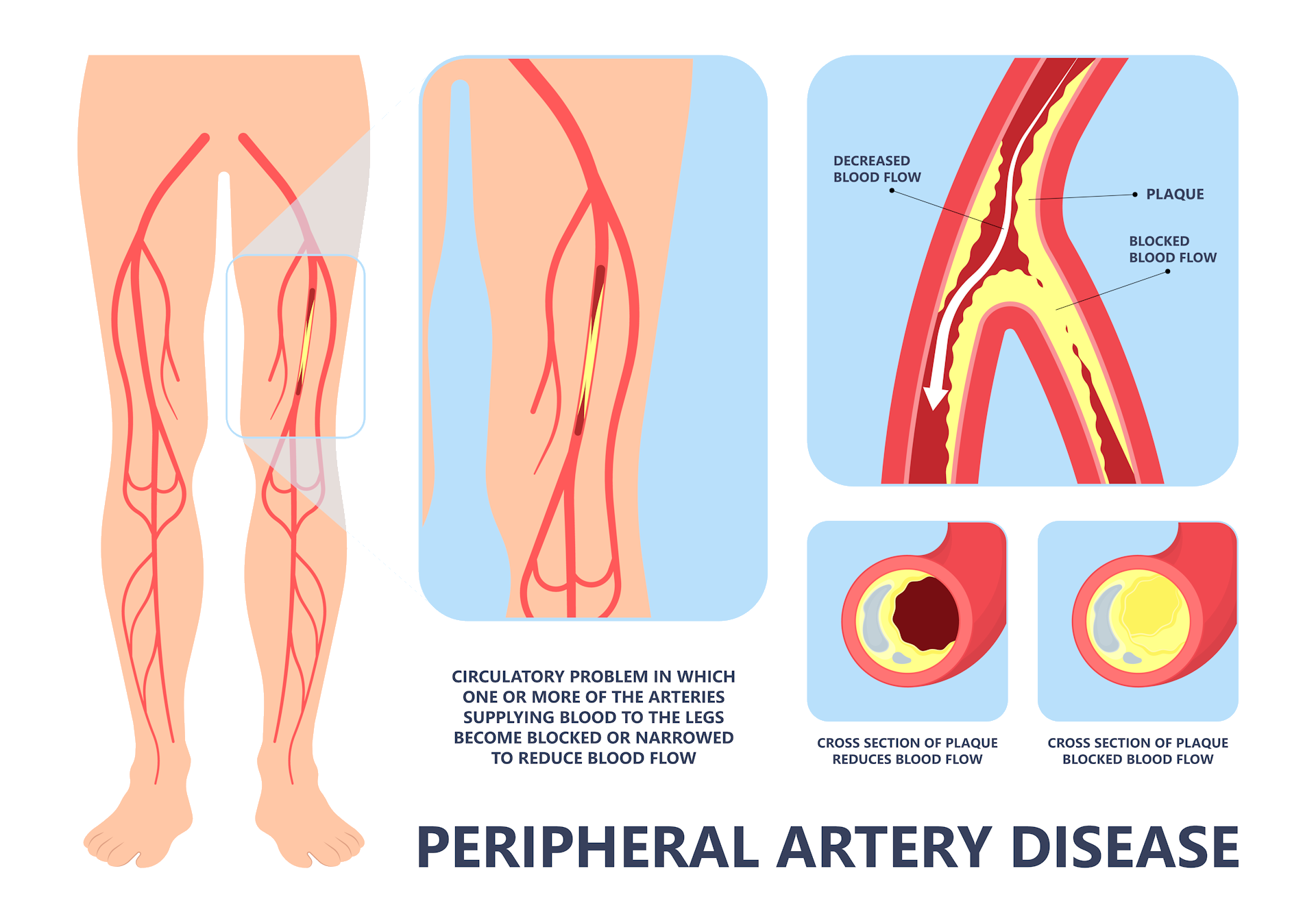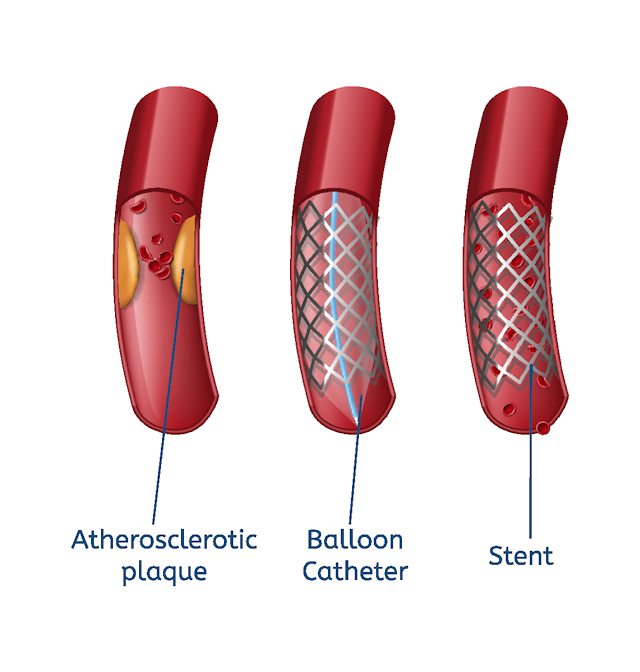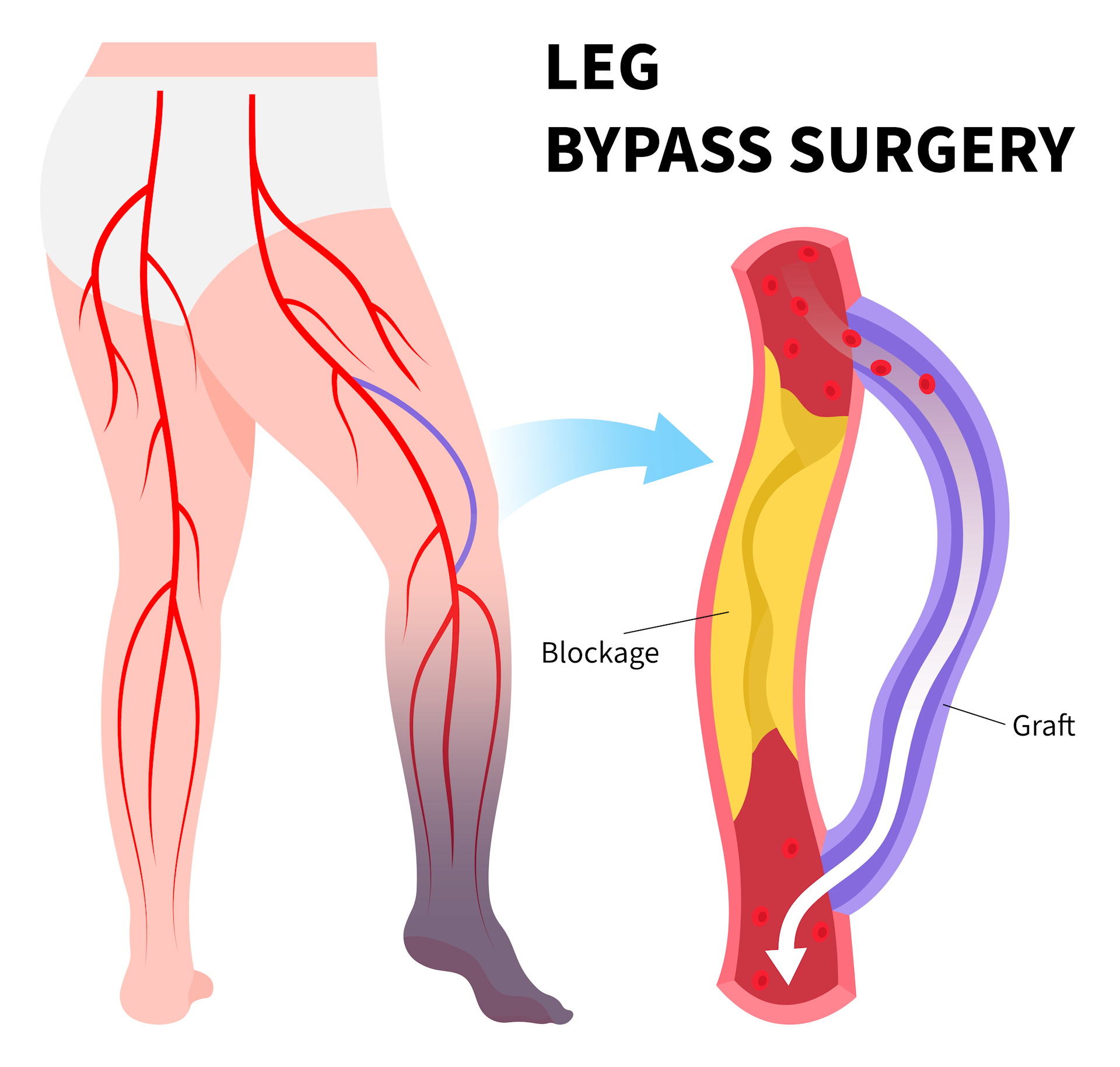Peripheral vascular disease is the term used to describe reduced or insufficient blood supply to your lower limbs (legs). The main cause is atherosclerosis. Atherosclerosis is commonly referred to as hardening of the blood vessels and occurs commonly with advancing age. It is accelerated by smoking, high blood pressure, diabetes, high cholesterol and genetics. Active lifestyle with balanced diet can significantly reduce the risk of atherosclerosis.
When there is a narrowing or blockage to the arteries to the leg, the most common symptom is cramps on walking. These are different to the night cramps commonly experienced by people. The cramps commonly affect the calf but can also affect the thigh and buttock muscles. The pain resolves with rest.
In severe blockages, the patients can develop ulcer (slow to heal wounds) and in the extreme, gangrene.

Assessment
Clinical examination of your pulses is essential, along with pressure measurements in your legs (ABPI +/- Toe pressures). Following this you will generally need imaging. The three types of imaging are ultrasound (Duplex) scan, CT scan, or MRI scan. The later two involve injecting contrast (dye) to see the blood vessels.
In all patients, medical treatment is always required. This involves active daily walking, smoking cessation and control of blood pressure, diabetes, and cholesterol. Patients are put on blood thinners (like aspirin), cholesterol medication (statins).
Following a period of observation, you will be counselled by Dr Giri Mahadevan on what the best course of treatment is for you. It is important to trial lifestyle and medications prior to intervention. Once on the intervention pathway, many patients require multiple interventions during their lifetime. It is, therefore, best to delay intervention as long as possible.
Interventions
Angioplasty and Stenting
Catheter angiography is usually performed as a day stay or overnight procedure. It involves local anaesthetic and needle inserted into the groin artery. Using contrast (dye), a roadmap of the blood vessels and narrowing/blockages are identified. Balloons and/or stents can then be placed to open the blood vessels to flow normally. You will need to be on blood thinners long term, to keep the blood vessel open. Ballon angioplasty and stenting has a chance of narrowing again over time. Therefore, you will need regular scans to check the state of the blood vessels over two years.

Endarterectomy
Endarterectomy is an operation performed under anaesthetic. It can be performed when there is a localised area of narrowing or blockage. The common areas this procedure is performed are in the neck (carotid endarterectomy) and groin (femoral endarterectomy).
The procedure involves an incision over the narrowed artery. The plaque causing the narrowing is then removed. The artery is commonly repaired using a gusset (patch of material), either synthetic or animal origin. The procedure is very durable and gives excellent results. It does have complications and risks; therefore, it is important to discuss this with Dr Giri Mahadevan. Patients usually stay in hospital for one to two days and short recovery at home.
Bypass Surgery
Bypass surgery in the lower limb is performed when there are long or extensive blockages in the arteries. Short narrowing and blockages can usually be treated by angioplasty, stenting or endarterectomy. This is a much more involved operation with 5 days in hospital with two month recovery period.
Bypass operation involves attaching a conduit before the blockage and running this down to past the blockage and joining it the artery. This then provides an alternative pathway for the blood to reach the lower leg. The conduit used varies depending on the area of operation. In the abdomen, usually synthetic grafts are used as conduit for the bypass. For bypass operation in your leg, the Great Saphenous Veins, which is a spare vein that runs on the inside of your thigh is used.
All grafts will need monitoring with scans for usually two years after surgery. In some patient’s further procedures like angioplasty will need to be formed on the bypass over time to keep it open.
